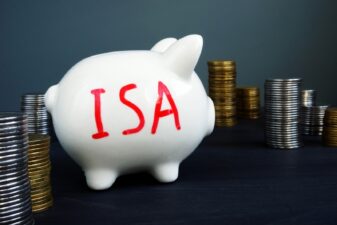One of the risks of being an income investor is that you can be seduced by attractive yields, which are sometimes a symptom of a declining business or a falling share price.
Take RSA Insurance Group (LSE: RSA) (NASDAQOTH: RSANY.US), for example. The firm’s share price fell by almost 6% yesterday, after it revealed heavy storm losses. But every cloud has a silver lining, and RSA shares now offer a very attractive 5.3% prospective yield.
The only trouble is that RSA’s share price could continue to fall, cancelling out its yield and leaving its total return far below the long-term average total return from UK equities, which is about 8%.
Passive income stocks: our picks
Do you like the idea of dividend income?
The prospect of investing in a company just once, then sitting back and watching as it potentially pays a dividend out over and over?
If you’re excited by the thought of regular passive income payments, as well as the potential for significant growth on your initial investment…
Then we think you’ll want to see this report inside Motley Fool Share Advisor — ‘5 Essential Stocks For Passive Income Seekers’.
What’s more, today we’re giving away one of these stock picks, absolutely free!
What will RSA’s total return be?
The dividend discount model is a technique that’s widely used to value dividend-paying shares. A variation of this model also allows you to calculate the expected rate of return on a dividend paying share:
Total return = (Prospective dividend ÷ current share price) + expected dividend growth rate
Rather than guess at future growth rates, I usually average dividend growth between 2009 and the current year’s forecast payout, to provide a more reliable guide to the underlying trend. Here’s how this formula looks for RSA:
(6.4 ÷ 121) – 0.0615 = -0.0086 x 100 = -0.86%
My model suggests that RSA shares may deliver a dismal -0.9% total return over the next few years, hugely underperforming the long-term average total return of 8% per year I’d expect from a FTSE 100 tracker.
This is the result of RSA’s falling dividend and strong share price performance — investors have already accepted a lower yield from RSA, as the wider market has risen, but they may be unlikely to do so again.
Isn’t this too simple?
One limitation of this formula is that it doesn’t tell you whether a company can afford to keep paying and growing its dividend.
My preferred measure of dividend affordability is free cash flow — the cash that’s left after capital expenditure and tax costs.
Free cash flow is normally defined as operating cash flow – tax – capex.
RSA’s free cash flow of £422m covered its £277m dividend payout last year, but once the firm’s £115m interest payment and £73m pension deficit payment were included, it came up short.
In my view, RSA’s dividend growth prospects are uncertain, and its share price could fall further if its results remain poor.







